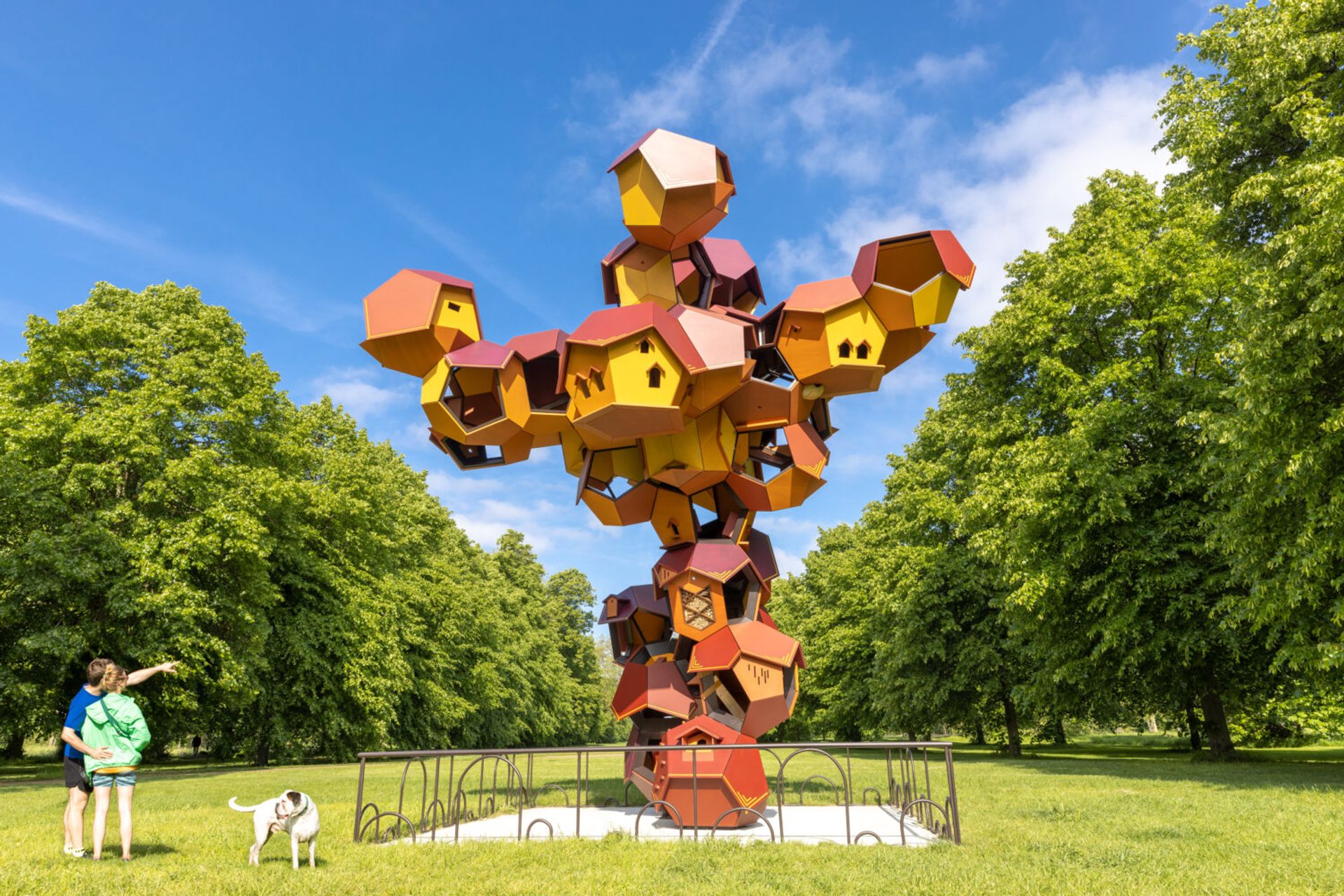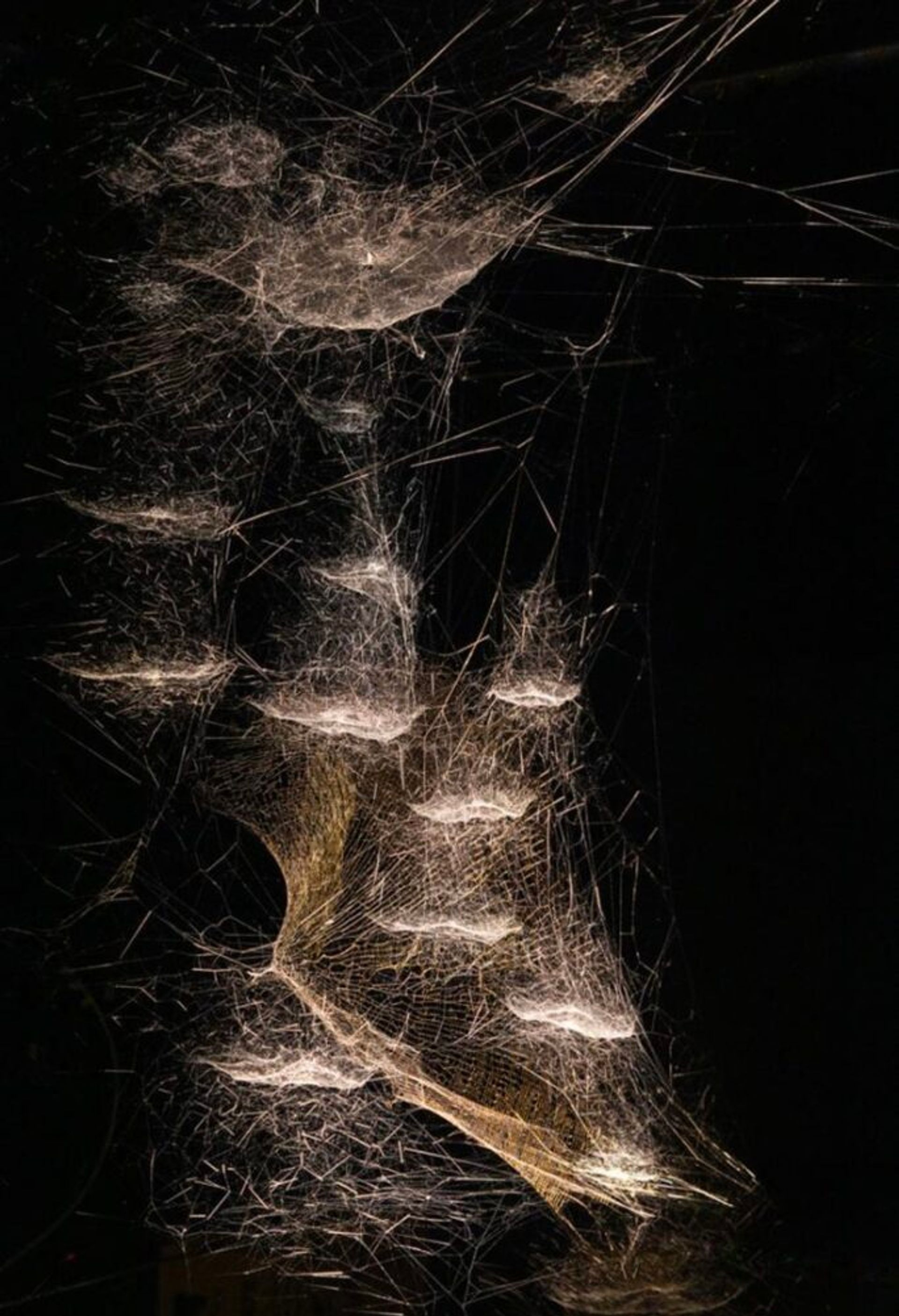As the title of this column suggests, there is no shortage of artists currently working on the environment. Or institutions that strive to signal their commitment to green. But Tomás Saraceno is in a separate category. Just like the Serpentine Gallery. This is confirmed by the current Saraceno show the Web[s] of life at Serpentine South which presents a brave new model of sustainable exhibition that lays down the gauntlet to all those planning and programming environmentally responsible shows.
Saraceno first trained as an architect and his vision is global. For more than two decades, this Argentina-born, Berlin-based artist has worked with local communities, scientific researchers and institutions around the world to produce a body of work that aims to seek a more equitable balance between human diversity, tech and organic. His many and diverse projects draw attention to the complex and interrelated factors that make up an ecosystem, from humans and animals to plants and all manner of matter. Saraceno treats his Berlin studio as “an experimental environment” in which he brings together a range of disciplines spanning art, architecture, design and social sciences to research and develop ambitious sculptural installations, participatory events and directed initiatives. by the community.

Cloud Cities: Space Species and Other Rooms* (2023). Installation view at Tomás Saraceno In Collaboration: Web(s) of Life, Serpentine, London, 2023
Photography by Studio Tomás Saraceno
All of the above is highlighted in the Web[s] of life, in which the Serpentine South building and its operations have been adapted to create a “porous environment” that responds directly to the surrounding park and weather conditions. The gallery’s heating and air conditioning systems have all been turned off, with the only source of energy for the exhibition coming from solar panels installed on the roof. If the day is too cloudy, the electricity is temporarily cut off, suspending the cinematographic works of Saraceno and the illumination of the exhibitions. In the event of a heat wave, parts of the gallery will be rendered uninhabitable, with staff and the bookshop decamping to continue their activities under the trees of Hyde Park.
The Serpentine merges more indoors and outdoors leaving one side of the gallery entirely open to the landscape each day of the exhibition, with creatures of all kinds – both wild and domesticated – invited to enter and to inhabit its spaces. There are several sculptural bird boxes, insect houses, a ladder for squirrels, and silhouette sculptures to accommodate foxes, dogs, deer, and hedgehogs. An elegant diptych of minimal blank canvases hides hidden dog treats to attract the park’s canine population. Children have a hidden den-like space where they can play and draw from the cloud shapes, and there are more clusters of bird and insect nest boxes on the roof and exterior walls as well as in the park.
Near the main entrance is a row of stationary bicycles which, when pedaled, activate an audio recording of a Manifesto for an eco-social energy transition of the peoples of the South, written by the indigenous communities of Jujuy in Argentina. These people are fighting to save their land and water from the mining of lithium by big business, mostly used to supply phone batteries and electric cars.
Saraceno has worked with these communities for decades and his powerful film in the central Serpentine rotunda (visible when solar supplies permit) highlights this battle of David and Goliath, and the vexed complexity of much of the self -called green technology. The work is called Fly with Pacha, in the Aerocene and it also dramatically documents the flight of an aerosol balloon, lifted by the power of the sun and carried by the winds through the vast salt flats of Argentina’s Salinas Grandes, emblazoned with the message “Water and life are worth more than lithium”.
When this air travel took place in January 2020, it was the first ever human flight without fossil fuel, without burners, solar panels and batteries, helium or hydrogen. It broke 32 world records and was recognized as the most sustainable flight in human history by the Fédération Aéronautique Internationale (FIA), as well as being a great collective effort and raising the profile of a besieged and threatened region.

The details of Web.Life 202.3
Courtesy of Spider/Webs; photography by Studio Tomás Saraceno; © Tomas Saraceno
For Saraceno, collaboration is everything, and among his most striking co-creators are those of an eight-legged type. In dark galleries, a series of large, spotlight-lit cobwebs twinkle and quiver like mirages of breathtaking beauty, a metaphor for all his interrelated activities and the synthesis of a long-standing concern for spiders and their webs as “a source of wonder and inspiration.” Another giant web is visible through the grille of a repurposed confessional which visitors are invited to enter along with other spiders the artist hopes to add to the work. The arachnid’s oracular powers are also celebrated in a film made with the spider diviners of Somié in Cameroon, who work with spiders living in holes in the ground that move special leaves in response to vital questions. Visitors to the Serpentine can also use this arachnid advice service through a dedicated website—built by Saraceno to open up this hitherto rather niche business.
What a rich and complex spectacle! Saraceno describes what he did to one of London’s most prominent contemporary art galleries as the “Ballad of Weather Addiction” in which the Serpentine itself became a sentient and enduring living entity, which sleeps and breathes, overheats and then cools, in harmony with the world around it. In the future, when the gallery shifts its focus to bipedal visitors, the solar panels will remain, along with its outdoor bird and insect nest boxes. Because, as Saraceno says, “it is high time that some of us changed our habits and not the climate”.
• • Tomás Saraceno In Collaboration: Web[s] of life, South Serpentine, until September 10
